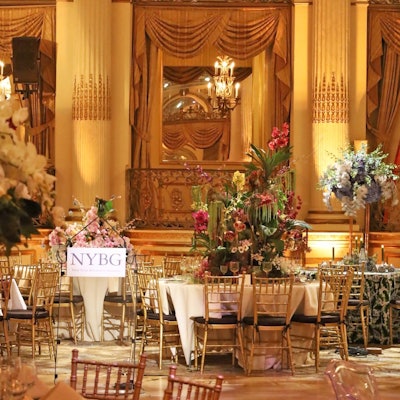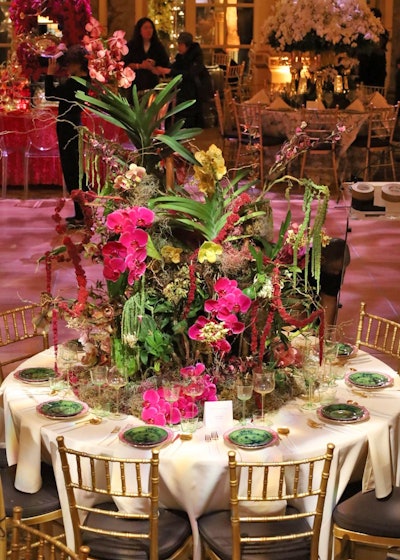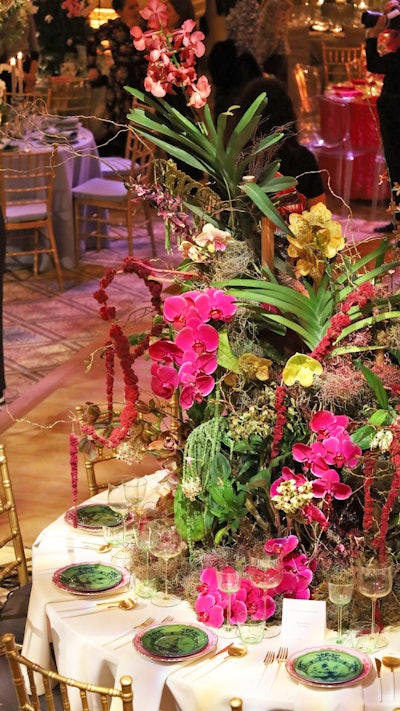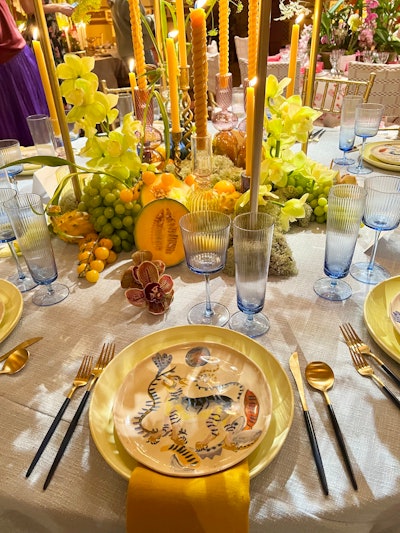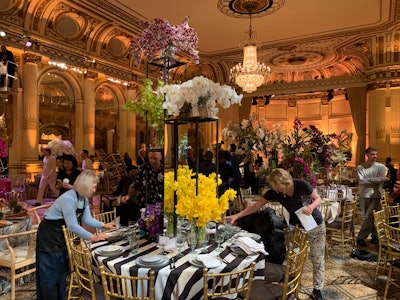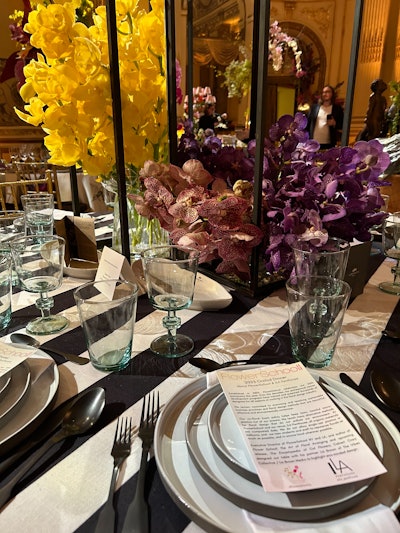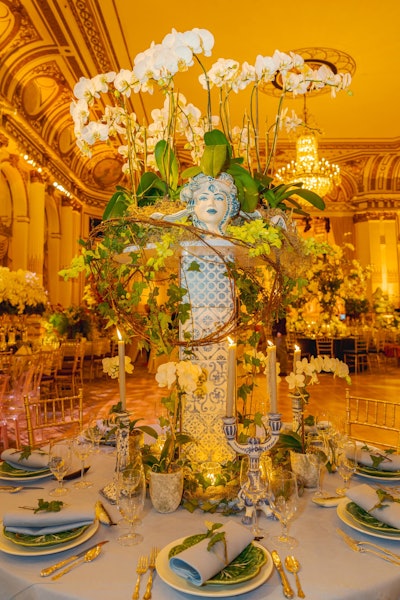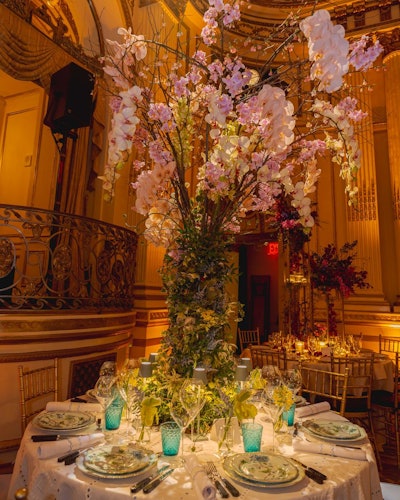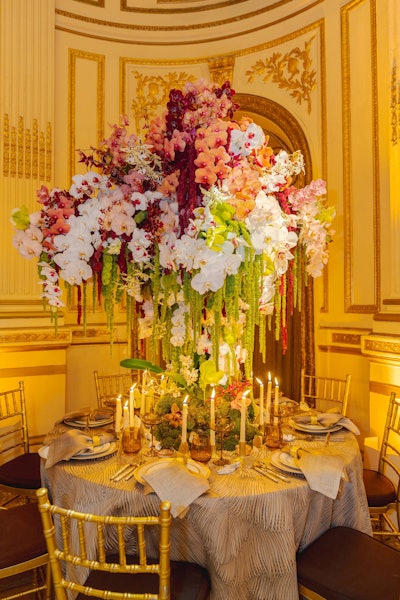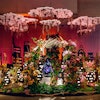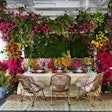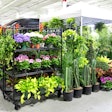 “This year, we chose to color block our orchids in sustainably manufactured Orrefors Bloom vases that sat on various plateaus in the centerpiece,” Calvert Crary of FlowerSchool explained. “We added a mirror for extra dimension to this very vertical, geometric installation.” The table was designed by Liz Brown of The Vibes Collective and Crary, whose second book, The Encyclopedia of Cut Flowers: What Flowers to Buy, When to Buy Them, and How to Keep Them Alive Longer, will be released in October.Photo: Calvert Crary
“This year, we chose to color block our orchids in sustainably manufactured Orrefors Bloom vases that sat on various plateaus in the centerpiece,” Calvert Crary of FlowerSchool explained. “We added a mirror for extra dimension to this very vertical, geometric installation.” The table was designed by Liz Brown of The Vibes Collective and Crary, whose second book, The Encyclopedia of Cut Flowers: What Flowers to Buy, When to Buy Them, and How to Keep Them Alive Longer, will be released in October.Photo: Calvert Crary
The event, which began with a sale of rare and special orchids, raised over $800,000 for the institution’s global programs in science, education, and plant conservation.
Sustainability Remains Top of Mind
Crary said that he noticed “a huge uptick in sustainable designs” at this year’s Orchid Dinner. “In fact, sustainability was the inspiration for many of the tables this year.”
But the floral industry is notorious for producing tons of waste, so updating old methods and introducing new techniques has become paramount. “I believe the greatest obstacle to achieving sustainability in the floral industry is the lack of knowledge and a tendency to stick to established habits,” Olivia said. “People and companies tend to keep doing things the same way even when there are better alternatives available. A prime example of this is the use of floral foam, which has a significant negative impact on the environment."
She added that “by taking small steps, such as switching from floral foam to chicken wire, reusing water tubes, and composting fresh materials, we can collectively make a significant difference for our planet.”
Crary explained that “the fact that flowers don't last forever makes large-scale installations a challenge, especially if they are meant to be enjoyed for multiple days.” He suggested mixing fresh blooms with dried, preserved, and faux flowers, and lots of foliage. “Not only do you save on cost, but you get more life out of your creations and have materials that you can work with again.”
Echoing Olivia’s sentiment, he added that “there are so many little changes florists can make by choosing different materials that will make a huge impact on our environment,” such as using AgraWool bricks or Oshun Pouches in place of floral foam, which is an “easy way to eliminate harmful microplastics from our oceans.”
Instead of using traditional floral foam for her Orchid Dinner design, Carozzi and her team used Oshun Pouches, AgraWool blocks, and chicken wire, as well as reindeer moss, plus fruits such as watermelon and grapes to hold some of the flowers in place. Beeswax-coated hemp twine—which she said is very strong, water resistant, and compostable—was used to tie elements together.
Florals Trends for Spring
With spring and summer events already popping up on the calendar, Crary, Olivia, and Carozzi also offered their predictions on what you can expect to see this season.
“I think that this spring and summer are going to be all about bold expressions of color in florals. I think designers are going to continue to push the envelope on combining interesting and vibrant color palettes. Clients and customers are so ready for it!” Olivia said.
 "In terms of shape and style, the sculptural Ikebana style-inspired arrangements are popular and are my personal favorite to create right now both for corporate events and to intersperse with fuller arrangements at weddings," Carozzi said.Photo: Courtesy of Tin Can Studios
"In terms of shape and style, the sculptural Ikebana style-inspired arrangements are popular and are my personal favorite to create right now both for corporate events and to intersperse with fuller arrangements at weddings," Carozzi said.Photo: Courtesy of Tin Can Studios
“We are still getting a lot of requests for very colorful, fun arrangements using seasonal local ingredients,” Carozzi said. “Color is everything! In terms of shape and style, the sculptural Ikebana style-inspired arrangements are popular and are my personal favorite to create right now both for corporate events and to intersperse with fuller arrangements at weddings.”
Keep scrolling to see more from the NYBG Orchid Dinner...
